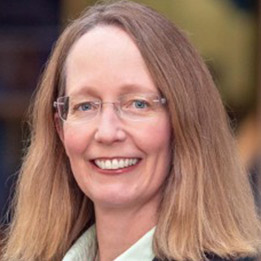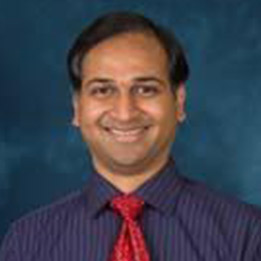Collaboration Stories
The purpose of this series is to tell the story of long-lasting, as well as emergent, stories of collaboration among clinicians and methodologists, content experts, and engineers, who have successfully worked on joint projects at the intersection of AI and health. Such collaborations are at the center of e-HAIL’s mission, and we offer these stories as a way of inspiring collaboration in other researchers.
“The Marriage of the Need for It and the Ability to Do It”

Deanna Marriott, Ph.D.
Research Assistant Professor
Nursing, Systems Populations and Leadership

Vinod Vydiswaran, Ph.D.
Associate Professor
Department of Learning Health Sciences
In this interview, e-HAIL members Drs. Deanna Marriott and Vinod Vydiswaran discuss how they got to know each other and started working together on their project to conduct a meta-analysis on peer-reviewed literature on diabetes. Their research revolves around a common challenge: given a complex disease like diabetes that has multiple definitions in literature and on which hundreds of papers are written every year, how can researchers extract all the information in a structured fashion that enables them to discover what is most relevant to their personal research? As they discuss how they met and started working together, they share insights into what makes their dyad work.
How did you two get to know each other?
Deanna: I had this big dream that needed an AI person with a specialty in natural language processing. So I reached out to MIDAS and said, hey, do you know anybody with this skill set? I simultaneously reached out to Rada. Both of them said: you should talk to Vinod.
Vinod: This was three or four years back. Deanna’s idea was to do a meta analysis by trying to extract information from published literature — which was a part of research that I had always been interested in but never been able to explore more fully. I am interested in looking for health-related information wherever it comes from, particularly: clinical notes and electronic health records, social media, and peer-reviewed literature. The peer-reviewed literature part was something that was always a part of my passion, but I did not have a current project on it. When Deanna proposed her idea, I realized this was the kind of project I wanted to work on: linking information from multiple papers together and being able to assimilate the information.
So you were both heading in this direction even before meeting each other?
Vinod: Yes, in the sense that we wanted to do this with papers. But I had not really thought about a specific project, and Deanna provided that project. It was the marriage of the need for it and the ability to do it.
Deanna: I’m a statistician. My clinical expertise is diabetes, and I was working a lot on building simulation models of diabetes, which is this very complicated disease — people spend entire careers working through the details on just a single aspect of it — and I needed to be able to access all of these aspects at a very detailed level. I needed to be able to understand all of this research, and I just couldn’t keep up given the scale of it all. I recognized that I needed a partner in the AI world.
How do you make sure you each get something out of the project?
Vinod: Although we are still early into the process, the way the collaboration has gone so far, it has been straightforward for us both to feel rewarded by the project. As an example, we wrote a methodological paper together about the main contributions of the research.
When we are working on the meta-analysis component, Deanna will lead — since that is really her forte — on writing the papers and highlighting what the methodology adds to the research. For the grant proposals, we have always gone in as co-PIs. Even though we are working on it together, we choose through which of our schools we want to send it depending on what we feel is the closest match so as to position the grant in a way that has the highest chance of success.
Deanna: Another thing that we do when we write a grant together is we make sure that there are always aims that are of interest to both of us: there’s Vinod’s aim, there’s my aim, and then there’s the applied aim. We’ve found that this approach works well for us. I’m finding this collaboration to be very intellectually rewarding.
What kind of challenges have you faced during the process?
Deanna: Vinod and I have the advantage that we are both technical people, which makes the translation across disciplines more straightforward. For me, I think that the biggest challenge was a steep learning curve in terms of AI and NLP.
Vinod: For me, I think understanding the different nuances of it, both the statistics and methodological aspects of it as well as the diabetes aspect of it. I rely on Deanna a lot to teach these aspects to me. But I think she’s right in that, both of us being a bit more methodologically oriented, we’re able to quickly get to the important part needed for the project to win.
It is really going into the collaboration and being willing to learn new things. Even today, in this interview, I just learned that there are people who spend their entire lives doing this task. This is the second time I have realized that it’s a big area of work where people have to comb through past papers.
Why do you think collaborative, interdisciplinary research is important?
Deanna: Health has gotten so big and so complicated that we can’t solve the problem without sophisticated computing. We can do things together that we could never do alone.
Vinod: I completely agree with that, and Michigan provides the environment to build those relationships and sustain them. Michigan is such a diverse place in terms of its research areas and its ability to bring in interesting problems where combining skills from two different areas helps improve the solution for both areas. I can speak to other places where I have worked where the collaboration is really different because they have only one kind of people working together. E-HAIL is just a great example of how AI and health can function together.
Do you have any suggestions for how we can get researchers to form collaborative relationships and do collaborative research?
Vinod: I think this might be a long list of things. One way to make this work is understanding what the other person might be going through or might need at some point and trying to work that into the collaboration. Just understanding that the other person might be very busy at certain times, or that their work culture is different, is essential.
Deanna: Even before that, you need interesting problems and interesting questions that you can work on together. However, Vinod’s point is well made: you can have two people who have really great ideas, but if you can’t figure out how to work together, it does not work.
I think mutual respect is a huge deal. As a woman in STEM, I’ve experienced collaborations that lacked mutual respect, and the research suffered. In that regard, working with Vinod has been a rewarding experience for me. In terms of tips to other dyads, just being aware of the importance of respect in the dynamics of the relationship — understanding the other person’s perspective, appreciating what his or her priorities are, and, as Vinod pointed out, being aware of what the other person might be going through — and educating yourself about what other people’s experiences may or may not be is really key to making the collaboration work.
Vinod: One other thing is that knowing each other as a person becomes important. Research is just one part of the collaboration. We all are experts. We all do excellent things. It is the people who make the dyad work.

 MENU
MENU 
